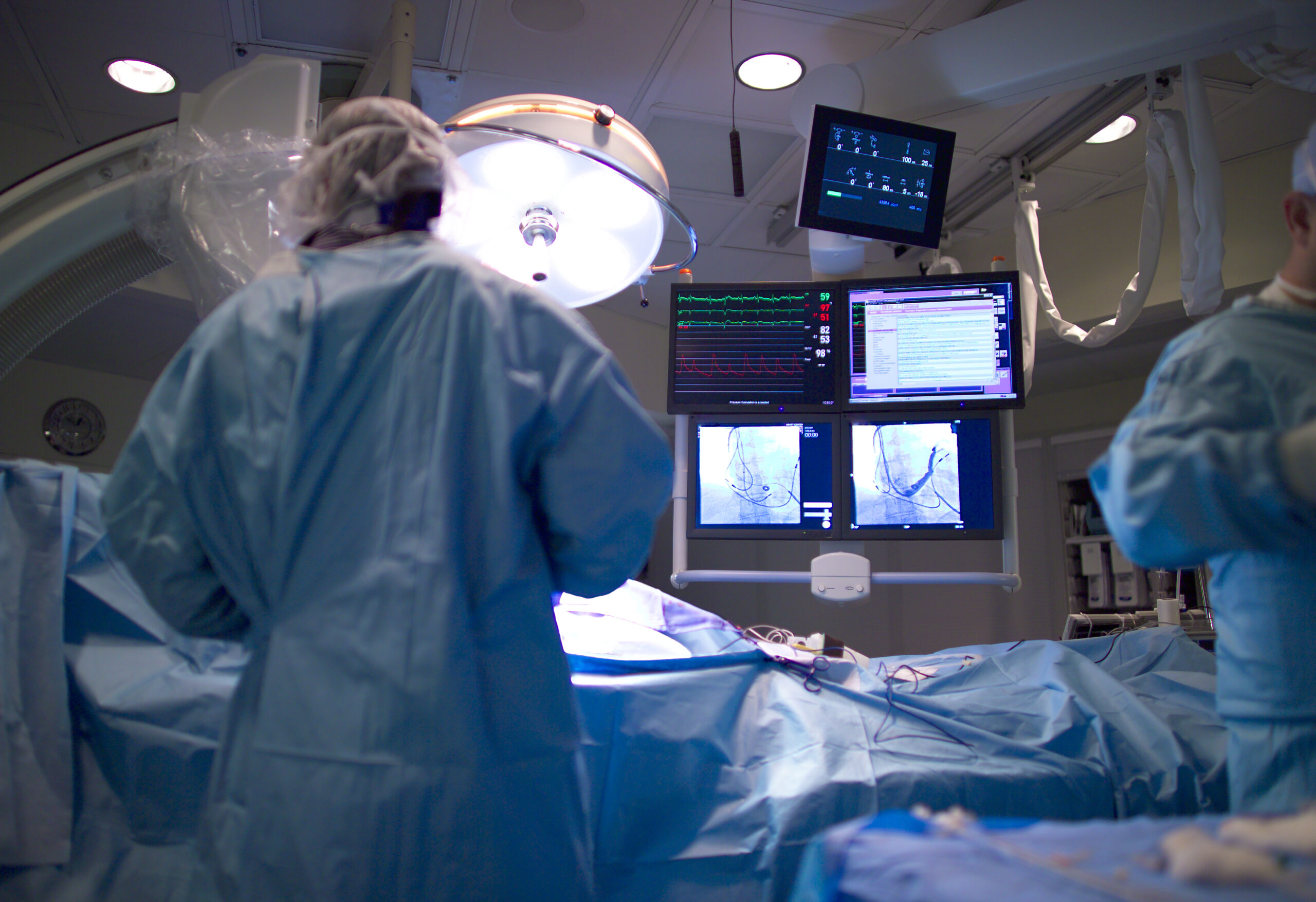The adoption of decentralized clinical trial (DCT) approaches has increased exponentially. Tools such as electronic consent, telehealth appointments and wearable devices have enabled investigators to contact trial participants virtually. In addition, DCT methods can help broaden trial access and recruit more diverse sets of participants. At the same time, there are a number of questions and concerns about the use of DCT techniques for oncology trials, as people with cancer make up a very vulnerable patient population.
Crystal S. Denlinger, MD, FACP, is a medical oncologist who has experience in gastrointestinal cancer and cancer survivorship. She is currently the Senior Vice President, Chief Scientific Officer of the National Comprehensive Cancer Network (NCCN). Her work now focuses on leading NCCN’s Oncology Research Program (ORP), among other duties.
The ORP collaborates with external funders to develop peer-reviewed grant opportunities for oncology researchers to improve cancer care. They facilitate funding of both investigator-initiated research involving therapeutics as well as quality improvement initiatives aimed at improving cancer care systemically.
In this exclusive interview with Xtalks, Dr. Denlinger discusses the pros and cons of telemedicine in the oncology setting and the barriers to adopting decentralized methods in oncology trials. Read on to learn more from Dr. Denlinger.
What are some benefits and challenges of telemedicine in oncology?
Dr. Denlinger: The COVID-19 pandemic expanded our experience with telemedicine in oncology on a large scale, which provided us with a look at opportunities and challenges.
From a benefits and opportunities perspective, telemedicine can provide access to some types of oncologic care without the need to travel. For example, in my opinion, telemedicine can be useful in survivorship care where people are generally well and care is focused on surveillance, management of late or long-term side effects, and preventive health. For survivors who may have returned to work or the normal hustle and bustle of everyday life, a telemedicine visit may be less disruptive to review results and progress than spending significant time in the oncologist’s office.
Telemedicine may also be useful for toxicity assessments for selective oral cancer therapy agents, especially those on stable doses and for longer periods with agents known to have somewhat predictable toxicity patterns.
Finally, telemedicine could be useful for certain assessments for clinical trials, such as interim toxicity assessments or as an adjunct to patient-reported outcomes.
In all of these scenarios, you not only get to engage with the patient or survivor, but you also get to see how they are doing in their home environment, which can provide additional insights for care delivery; however, determining for which patient and in which therapy or clinical trial telemedicine is safe and effective remains a challenge. There is something inherent to the in-person assessment that cannot be captured in a telemedicine visit, a “sixth sense” about how someone is doing that can help guide care. So telemedicine is an accessory to, not a replacement for, in-person care in my opinion.
In addition, not everyone has access to the technology needed for an effective telemedicine visit. To be comprehensive in care, you need to not only talk with someone, but you need to see them. Audio-only visits lack a component of decision-making that happens when you can both talk and see a patient and caregiver. Disparities in access to the types of technology that make telemedicine effective widen disparities in cancer care, and clinicians and policymakers must ensure that these disparities are addressed before we adopt telemedicine wholeheartedly.
There are many types of care visits that should not be done remotely, in my opinion, so determining the type of care and type of patient for which telemedicine can be successfully deployed is another challenge.
Overall, while I think telemedicine has a potential place in cancer care, I think more strategic thinking at both the clinical and policy levels is needed before we can fully embrace this platform for routine care delivery.
What are some barriers to adopting DCT methods in oncology trials?
Dr. Denlinger: There are currently a number of barriers to adopting virtual or decentralized methods. One of the largest, laid bare during the pandemic, was patient and caregiver comfort with and/or access to technology and virtual platforms. Many people, especially older adults and those in rural areas, may not have access to the technology needed for an effective virtual interaction. This might include not having the ability to effectively use smartphones or interactive virtual platforms or not having broadband or reliable internet access.
This disparity may further exacerbate current under-representation of certain populations in clinical trials and enforce inclusion biases, as older adults and those in certain geographic or socioeconomic populations are currently poorly represented in our clinical trial population.
Virtual methods for determining eligibility may also be a barrier, as characteristics displayed on paper or through a screen may not tell the full story of a person’s candidacy or noncandidacy for a trial.
Oncology trials are very labor-intensive and require significant care and monitoring to ensure safety of participants. Investigators must undergo regular training on principles of good clinical practice and protection for human subjects in order to be able to conduct these studies. An important component of clinical research is investigator oversight and appropriate training of research personnel. We already have a shortage of research personnel in our large clinical trial centers. Local providers may be less comfortable with clinical research regulations and providing adequate training remotely can be challenging in a busy health care environment.
Additionally, identifying the appropriate resources from which to source decentralized or remote assessments can be challenging for an investigator who may not know the local area in which a participant is living. Thus, finding local collaborators to perform assessments and collect and report data with the necessary rigor for clinical research can be a barrier to implementing and conducting virtual trials.
Building on this theme, as investigators, we are responsible for data quality, accuracy and privacy. Being able to assure limited variability in data collection and quality of collected data can be challenging when investigators are relying on providers and laboratories with which they have no established relationship.
Ensuring the privacy of protected health information of participants is also a key responsibility of all research staff, which can be more challenging when the data comes from multiple different sources or through multiple different means of transfer.
Finally, we currently do not have evidence to suggest that decentralized trial conduct is as effective or efficient as conventional trial conduct and need further work in determining best practices, policies and procedures to ensure the utmost protection of those participating in clinical research.
One final thought about virtual care and trials: Participation in a clinical trial is built on a foundation of trust between the patient, the caregiver(s), the research staff and the investigators caring for study participants. Trust and relationship building may be harder to do in a virtual platform, especially if that relationship is established solely for the participation in a clinical trial. Given that trust is foundational to any patient-provider relationship, overcoming obstacles to building trust presented by virtual engagement will be necessary for widespread use of a decentralized platform for clinical investigation.
What aspects of oncology trials are being more frequently conducted virtually?
Dr. Denlinger: At present, few aspects of oncology clinical trials are routinely conducted virtually; however, some organizations have begun to incorporate electronic consent processes into research practices, most commonly for nontherapeutic studies.
In fact, a recent survey of NCCN Member Institutions found that approximately one-quarter of these leading academic institutions had incorporated some form of electronic consents into practice for mostly nontherapeutic trials; however, it is not clear what proportion of these organizations are also using electronic consents in a virtual fashion.
Electronic consenting has the ability to be done virtually, making it attractive for nontherapeutic or noninterventional studies, including those in the prevention or survivorship settings.
Another component of clinical trials that can be done virtually is patient-reported outcomes or the collection of patient-reported data. This allows the patient to report data from anywhere at a time convenient to them, qualities especially useful in prevention studies or large population-based studies.
Recent small studies have also begun to explore the feasibility of wearable technology in the collection of patient-related data. There is much work to be done before routine collection of patient-reported outcomes or wearable technology data virtually becomes standard practice; however, there is a lot of interest from investigators and study sponsors in how to incorporate virtual platforms for data collection to increase both what we can learn from a trial participant population and how we can more inclusively engage patients in trials who may have less access to a clinical trial center or site.
How does the NCCN help improve patient access to oncology clinical trials?
Dr. Denlinger: NCCN believes that the best management of any patient with cancer is in a clinical trial and thus strongly encourages clinicians and patients to participate in clinical trials. This principle is highlighted throughout NCCN Guidelines and discussed within NCCN Guidelines for Patients®.
In addition, our website includes a section within patient resources for support for patients and caregivers. Within the Questions to Ask About Cancer Care is a section specifically addressing questions about clinical trials that patients and caregivers should consider asking their oncology providers (NCCN.org/questions).
In addition, NCCN’s Patient Resources website includes a specific webpage dedicated to understanding clinical trials from the patient and caregiver perspective. NCCN’s Oncology Research Program’s webpage also provides information on active trials funded through our program at our Member Institutions.
Further, by funding investigators across our Member Institution network in a variety of disease settings and research models, NCCN provides opportunities for unique and impactful research to be performed throughout the country and within a variety of geographically diverse patient populations.
In addition to our organizational efforts, NCCN Member Institutions are all leaders in the field of cancer research and each organization has a wide range of clinical trial offerings. Each Member Institution maintains their own publicly available list of open trials and include appropriate trials on clinicaltrials.gov.
The clinical trial landscape is bound to change as innovative DCT methods are developed and implemented over time; however, the key message from Dr. Denlinger is that there is still more work to be done to determine the best DCT practices for oncology trials.












Join or login to leave a comment
JOIN LOGIN